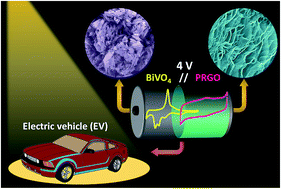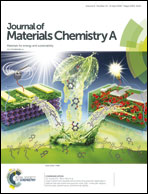Unveiling BiVO4 nanorods as a novel anode material for high performance lithium ion capacitors: beyond intercalation strategies†
Abstract
Energy storage is increasingly demanded in many new niches of applications from wearables to unmanned autonomous vehicles. However, current energy storage systems are unable to fulfill the power requirements (high energy at high power) needed for these novel applications. Recently, Li-ion capacitors (LICs) have been spotted as hybrid devices with the potential to display high energy and high power. Nevertheless, it is still a great challenge to achieve high performance LICs due to the unmatched kinetic properties and capacity between anode and cathode materials. Herein, we are presenting our first seminal report on the use of BiVO4 nanorods as a new anode material for LICs coupled with a partially reduced graphene oxide (PRGO) cathode. The BiVO4 nanorods show an excellent reversible capacity of 877 mA h g−1 (ultrahigh volumetric capacity of 4560 mA h cm−3) at 1.1 A g−1 with a great capacity retention (in half-cell design), which is the highest value reported so far for metal vanadates. Later on, a LIC was constructed with BiVO4 as the anode and PRGO as the cathode electrode, delivering a high energy density of 152 W h kg−1 and a maximum power density of 9.6 kW kg−1 compared to that for hard carbon and intercalation (such as Li4Ti5O12 and Li3VO4) based anode materials. Additionally, the BiVO4//PRGO LIC exhibits a good cyclability of 81% over 6000 cycles. Thus, this investigation opens up new opportunities to develop different LIC systems.



 Please wait while we load your content...
Please wait while we load your content...